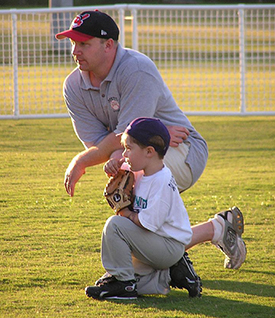| << Chapter < Page | Chapter >> Page > |

The drive to adhere to masculine and feminine gender roles continues later in life. Men tend to outnumber women in professions such as law enforcement, the military, and politics. Women tend to outnumber men in care-related occupations such as childcare, healthcare (even though the term “doctor” still conjures the image of a man), and social work. These occupational roles are examples of typical U.S. male and female behavior, derived from our culture’s traditions. Adherence to them demonstrates fulfillment of social expectations but not necessarily personal preference (Diamond 2002).
U.S. society allows for some level of flexibility when it comes to acting out gender roles. To a certain extent, men can assume some feminine roles and women can assume some masculine roles without interfering with their gender identity. Gender identity is a person’s deeply held internal perception of his or her gender.
Individuals who identify with the role that is the different from their biological sex are called transgender . Transgender is not the same as homosexual, and many homosexual males view both their sex and gender as male. Transgender males are males who have such a strong emotional and psychological connection to the feminine aspects of society that they identify their gender as female. The parallel connection to masculinity exists for transgender females. It is difficult to determine the prevalence of transgenderism in society. However, it is estimated that two to five percent of the U.S. population is transgender (Transgender Law and Policy Institute 2007).
Transgender individuals who attempt to alter their bodies through medical interventions such as surgery and hormonal therapy—so that their physical being is better aligned with gender identity—are called transsexuals . They may also be known as male-to-female (MTF) or female-to-male (FTM). Not all transgender individuals choose to alter their bodies: many will maintain their original anatomy but may present themselves to society as another gender. This is typically done by adopting the dress, hairstyle, mannerisms, or other characteristic typically assigned to another gender. It is important to note that people who cross-dress, or wear clothing that is traditionally assigned to a gender different from their biological sex, are not necessarily transgender. Cross-dressing is typically a form of self-expression, entertainment, or personal style, and it is not necessarily an expression against one’s assigned gender (APA 2008).
There is no single, conclusive explanation for why people are transgender. Transgender expressions and experiences are so diverse that it is difficult to identify their origin. Some hypotheses suggest biological factors such as genetics or prenatal hormone levels as well as social and cultural factors such as childhood and adulthood experiences. Most experts believe that all of these factors contribute to a person’s gender identity (APA 2008).

Notification Switch
Would you like to follow the 'Introduction to sociology 2e' conversation and receive update notifications?